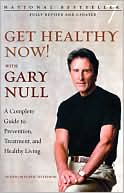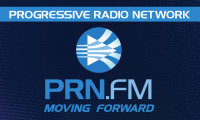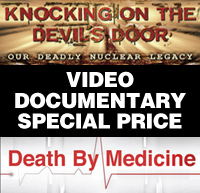Gary Null, Ph.D., and Nancy Ashley, VMD - The Politics of Medicine
 March 8, 2012
March 8, 2012 THE POLITICS OF MEDICINE
By Gary Null, PhD and Nancy Ashley, VMD
March 5, 2012
In 2012, America has become the most overmedicated society in history. Indeed, there is a medication for every condition, and we believe these medications will make us happy, slender, full of energy, and attractive like the people in the television ads. We are even told that we don’t take enough medications as the list of made-up diseases grows longer and longer: restless leg syndrome, social anxiety disorder, overactive bladder, pre-diabetes, adult ADD. We never stop to question why we need all these drugs. We never even notice that they aren’t making us better, or that we can’t get off them once we start taking them. Why do we refuse to see that despite all these medications we are nevertheless the sickest industrialized nation on earth?
America doesn’t profit from prevention. There are no preventative programs for cancer, heart disease, arthritis, dementia, Alzheimer’s, or diabetes, for a simple reason: it would compete with the massive profits of the medical industrial complex. So instead we have become a nation of gluttons -- we sublimate our anxiety and fears with comfort foods and the government encourages it instead of offering us an honest look at cause and effect. Protecting the financial interest of the fast food industry, the makers of potato chips, soft drinks, hamburgers, steaks, desserts, genetically engineered corn, and pesticides are a compliant FDA and USDA whose leaders have been hand-picked by the White House to represent the interests of manufacturers. There will be no advocacy from Congress whatsoever to help the health of Americans. But what is the likely outcome if we continue with our current lifestyles?
We are witnessing a watershed of dysfunction. The American media has assisted in creating this mythology. They have not only protected the American medical paradigm and the pharmaceutical industry, but they have actually attacked physicians, scientists, whistle-blowers, and parents groups that have run into the medical bureaucratic juggernaut. As a nation we have sunk so low as to allow our legislators to create laws based on what they are told by big business through the American Legislative Exchange Committee (ALEC), laws that mandate the Gardasil vaccine for girls and now boys or they can’t go to school, and laws that require that health care workers get the flu vaccine or lose their jobs. All of this without the major media ever raising a single question: is this real science, or science for sale?
We have decided to explore the politics of medicine and the consequences of therapies, physicians, scientists, advisors, government agencies, the media, and a vulnerable public who are unaware of how malignant the system has become – how pernicious, widespread, and in fact, endemic, the self-interest, greed and bad science actually is. Part I of our in-depth investigative report will show that American medicine is not only broken, but contributes to unnecessary injury and death into the millions of victims per year. It has morphed into an extension of the pharmaceutical industrial complex – the friendly face with the white coat and the stethoscope. We will now deconstruct this myth.
Part I - Death by Medicine
Iatrogenic Death
For anyone willing to listen, the truth is a shocker: the biggest killer of Americans isn’t heart disease, isn’t lung cancer, isn’t stroke and certainly isn’t infectious disease. The number one killer of Americans, with 600,000-800,000 deaths per year, is conventional medicine! How is this possible, what does this mean? Medicine kills in a number of ways:
Adverse Drug Reactions 106,000
Medical Error 98,000
Bedsores 115,000
Infection 88,000
Malnutrition 108,800
Outpatients 199,000
Unnecessary Procedures 37,136
Surgery-Related 32,000
Total 794,936 1
Medical Errors
According to a 1995 JAMA report, more than 1,000,000 patients are injured in US hospitals every year. The iatrogenic death rate dwarfs the annual automobile accident rate of 45,000 and accounts for more deaths than all other accidents combined.2 As little as 5% and no more than 20% of iatrogenic events are ever reported.3 This implies that if medical errors were completely and accurately reported, we would have an annual iatrogenic death toll much higher. The literature on medical errors is sparse and represents only the tip of the iceberg. There are autopsy studies that show rates as high as 35-40% of missed diagnoses causing death. One intensive care unit reported an average of 1.7 errors per day, 29% of which were potentially serious or fatal.4 The most important reason that medical records go unreported is that doctors and nurses are unprepared to deal with human error because of the culture of medicine which leads to covering up of mistakes rather than admitting them. The one person who has done the most research on iatrogenesis is Dr. Lucian Leape, who has doubtlessly published the most articles on the subject starting in 1994.5 According to Dr. Leape, the annual death rate for hospital inpatients as of 1997 could be as high as 420,000.6 A survey of a 1992 national pharmacy database found a total of 429,827 medication errors in 1081 hospitals. Medication errors occurred in 5.22% of patients admitted to these hospitals each year. The authors concluded that at least 90,895 patients annually were harmed by medications errors in the US,7 and there doesn't seem to be any evidence that this rate has improved over the intervening years.
Adverse Effects of Pharmaceuticals
There are many adverse effects associated with prescription drugs across all classes. Among some of the most commonly prescribed drugs, statins can lead to diabetes, memory loss, and crippling muscle pain.8,9,10 Diabetes drugs, such as Avandia and Actos, can cause increased incidence of heart attack and stroke.11 NSAIDS can cause GI bleeding and ulceration,12 and the cox-2 inhibitors, such as Vioxx and Celebrex, can cause heart attacks and stroke.13 Antibiotics such as Levaquin can cause tendon rupture, CNS impairment, liver failure, heart rhythm changes, pseudomembranous colitis, or even death. 14
As Americans take more and more pharmaceuticals, death from drug overdoses have more than tripled in the US since 1990 and in 2009 killed an estimated 36,000 people.15 The tendency to view prescription drugs as safe leads people to take too many pills or mix them with other drugs or alcohol, which can be fatal. A lot of these overdoses involve pain medication, such as Oxycontin, but it also has been found that regular users of sleeping pills have 3 – 5 times the risk of mortality compared to non-users. It is estimated that 6-10% of US adults took sleeping pills in 2010. A recent study in the British Medical Journal showed that heavy sleeping pill users were also more likely than cigarette smokers to be diagnosed with lymphomas, lung, colon and prostate cancers.16
Antidepressant use has become commonplace in America, with prescriptions rising 400% since 1988. Over the past two decades, the use of antidepressant medications has grown to the point that they are now the third most commonly prescribed class of medications in the United States, and the most frequently used medication by people in the 18-44 age range. By gender, 23% of women aged 40-59 take antidepressants.17
So what’s fueling this epidemic of antidepressant use? The pharmaceutical companies spend billions of dollars annually to market their drugs through sending drug representatives to meet with doctors face to face, through continuing medical education, articles in journals, and direct to consumer advertising. Doctors are bombarded with advertisements for antidepressants, as are the American people every time they turn on their television or pick up a newspaper or magazine. There has been a large-scale effort on the part of the pharmaceutical industry to persuade everyone that our brains are abnormal in their natural state and we need medication to correct a mythical “chemical imbalance.” The researchers have not studied normal balance in the brain, and the chemical imbalance theory is completely untested and unproven. 18 Yet, the campaign has been extremely effective and very lucrative for health care providers and the pharmaceutical companies. Much of this growth in psychiatric prescribing, in fact, has been driven by a substantial increase in antidepressant prescriptions by nonpsychiatrist providers without an accompanying psychiatric diagnosis. Between 1996 and 2007, the proportion of visits at which antidepressants were prescribed but no psychiatric diagnoses were noted increased from 59.5 percent to 72.7 percent!19 We feel bad and we want to feel better immediately without examining why we feel bad in the first place. But these tricyclic antidepressants, serotonin reuptake inhibitors, and antipsychotics all have side effects and will damage a normal brain over time. The most well regarded studies have shown that antidepressants don’t work much better than a placebo in relieving depression.20 Amazingly, the drug companies have been able to convince the American public that it is a medically sound premise to prescribe medication that might offer short term relief, but will definitely harm in the long run. And people find out the hard way that once you start taking an antidepressant, you can’t then discontinue it because the withdrawal is unbearable – so they are hooked for life.21
Drugs Pollute Our Water Supply
We have reached the point of saturation with prescription drugs. We act as human filters and the drugs and their metabolites are flushed down the toilet daily, ultimately showing up in our water supply. We have no way to know the long term health consequences of ingesting a mixture of drugs and their breakdown products.22
Drugs Pollute Our Food Supply
The largest use of pharmaceuticals is in food animals. Cows, sheep, pigs, chicken, fish are all dosed with a variety of antibiotics daily, to increase growth and to minimize the horrible contamination associated with factory farming. Not only does this practice contribute to the pollution of our water supply, but we ingest antibiotics every time we eat animal products. This is one of the main causes of antibiotic resistance in America and the subsequent appearance of so-called superbugs.23
Treating Chronic Disease
American medicine is expensive, yet we rank last out of the 28 developed countries in terms of life expectancy.24 We don’t stress the importance of proper nutrition, exercise, getting out in nature, nor do we encourage people to avoid stress itself. Through advertising and our opinion leaders, we are encouraged to believe that good health can only be obtained through medication: we are encouraged to believe that our problems are not of our own making, when in fact, most of them are. The diseases that plague Americans today are the so-called lifestyle diseases, which begin with us being the fattest nation on earth. Heart disease, Type 2 diabetes, arthritis, high cholesterol, high blood pressure all could be eliminated by improved nutrition and a program of healthy living.
Disease Mongering
We have a health care system that emphasizes early diagnosis and treatment. It sounds like a system that makes sense, but in reality this process doesn’t promote health – it promotes disease. Screening apparently healthy people draws them into a system which requires many tests, some of which are invasive and, in fact, dangerous. One of the most often cited examples is our practice of regular mammograms in healthy women. Mammograms are lauded as a test that saves lives, but is this true? A mammogram is an expensive test which requires a skilled technician, one or two board certified radiologists to interpret the results, and more time by the primary care physician to discuss the results. If there is a suspicious finding, then usually there is a repeat mammogram, possibly a surgeon, a surgery suite, a nurse, and an anesthesiologist to do a biopsy, then a pathologist to interpret those results, then back to the PCP. How many thousands of dollars does this scenario add up to so far? Women are never told that a mammogram is not a very accurate diagnostic test for breast cancer – there are large numbers of both false positives and false negatives.25 It is estimated that for 2,000 women who receive mammograms regularly over a 10-year period, one life will be saved and 10 women will be needlessly treated for cancer -- including chemotherapy, radiation and even breast removal.26 Many women have a negative mammogram only to discover a suspicious lump a few weeks or months later. But far worse than the fact that mammograms are not reliable is the fact that they are dangerous. According to Dr. Samuel Epstein, radiation from a mammogram is 200 times that from a chest xray. So if a premenopausal woman gets a bilateral mammogram every year for 10 years, it would be the equivalent of a woman in Hiroshima standing 1 mile away from where they dropped the atomic bomb!27 Is it really preventive medicine to recommend an annual procedure for women that will actually increase their risk of cancer?
Disease mongering also takes place at the pharmaceutical level. Over the years the thresholds for recommending medication have dropped lower and lower, so that people with blood pressure at the high end of normal, or a mild glucose elevation, or mildly elevated cholesterol are often prescribed medications. But of course, medications for blood pressure, diabetes, and cholesterol all carry with them significant side effects, making it more likely that the person will get sicker and be on medication for life.
The Health Insurance Conundrum
In March 2010, our bizarre system of health insurance was codified into law with the Patient Protection and Affordable Care Act. The big selling point to this law was the guarantee that everyone will have the ability to get health insurance regardless of any pre-existing conditions: no one will be turned down. However, there is no accompanying guarantee that the insurance will be affordable, and everyone will be required by law to buy insurance, even if they can’t afford it, or face a stiff fine. What this bill does first and foremost is guarantee that the insurance companies will have hundreds of thousands or millions of new customers and no incentive to provide a decent product that actually helps people obtain quality health care. Doctors are paid for each service, so they deliver as many as possible, necessary or not. Insurers protect margins by micromanaging claims and hiking premiums.28
Unlike the other major industrialized nations, the US does not have a system of universal government-sponsored health care, and we have become so brain-damaged by insurance company propaganda that most Americans believe this is a good thing that somehow gives us freedom from Big Government! Worse yet, our health insurance programs have always been tied to employment. If you have a low level job, odds are you get little or no health insurance paid for. If you are self-employed or unemployed, you are completely on your own, and will be forced to pay higher prices for the very same health insurance product, unless you are eligible for Medicaid or Medicare. This doesn’t guarantee access to decent health care, however, as participants of these programs have discovered when they try to find a physician: most doctors don’t want to participate in Medicaid or Medicare because the government reimbursement is so low. With the epidemic loss of jobs in this country, the number of uninsured is rising in tandem. The perversely-named Patient Protection and Affordable Care Act will not help people without the means to afford health care, but will require that they have it nevertheless.
As it stands now, one-sixth of our entire GDP is spent on health care -- $2.6 trillion for 2011, hitting $3 trillion in 2012 . This amounts to $7,200 per person, compared to $3,200 per person in Switzerland, France, and Germany.29 Yet, with all the measurements of what constitutes good health care outcomes, we are never at the top. In 2006, the US ranked 31st in infant mortality, behind all the industrialized European countries and even trailing Cuba!30 So we have what amounts to a lethal dichotomy: Americans are dying because they have no access to health insurance, but it would seem that an equal number are dying BECAUSE of our current system of medical care.
Endnotes:
- Null G et al, Death by Medicine, Mt. Jackson, VA, Praktikos Books, 2010.
- Bates DW et al, Incidence of Adverse Drug Events and Potential Adverse Drug Events: Implications for Prevention, JAMA 274 (1); 29-34.
- Null G et al, Death by Medicine, Mt. Jackson, VA, Praktikos Books, 2010.
- Ibid
- Leape LL, Error in Medicine, 1994, JAMA 272 (23); 1851-7.
- Null G et al, Death by Medicine, Mt. Jackson, VA, Praktikos Books, 2010.
- Bond CA et al, Clinical Pharmacy Services, Hospital Pharmacy Staffing, and Medication Errors in United States Hospitals, 2002, Pharmacotherapy 22 (2); 134-47.
- Preiss D et al, Risk of incident diabetes with intensive-dose compared with moderate-dose statin therapy: a meta-analysis. JAMA. 2011 Jun 22; 305(24):2556-64.
- Harper CR and Jacobson TA, The broad spectrum of statin myopathy: from myalgia to rhabdomyolysis, Curr Opin Lipidol. 2007 Aug;18(4):401-8.
- FDA Drug Safety Communication: Important safety label changes to cholesterol-lowering statin drugs, FDA, Mar. 1, 2012,http://www.fda.gov/Drugs/DrugSafety/ucm293101.htm?utm_source=fda&utm_medium=website&utm_term=Statins&utm_content=f3&utm_campaign=HomePageSpotlight, accessed 3/1/12.
- Graham DJ et al, Risk of Acute Myocardial Infarction, Stroke, Heart Failure, and Death in Elderly Medicare Patients Treated With Rosiglitazone or Pioglitazone, JAMA, 2010; 304(4):411-418.
- Abraham NS, When Pain Relievers Cause Bleeding, The New York Times, April 23, 2010,http://consults.blogs.nytimes.com/2010/04/23/when-pain-relievers-cause-bleeding/, accessed 2/28/12.
- Study Points Toward Alternatives For Vioxx And Celebrex, Apr. 17, 2006, Science Daily,http://www.sciencedaily.com/releases/2006/04/060417124231.htm, accessed 2/28/12.
- Levaquin package insert, Janssen Pharmaceuticals, 2011, http://www.levaquin.com/sites/default/files/pdf/levaquin.pdf, accessed 2/28/12.
- CDC, Policy Impact: Prescription Painkiller Overdoses, Centers for Disease Control and Prevention, December 19, 2011,http://www.cdc.gov/homeandrecreationalsafety/rxbrief/, accessed 2/28/12.
- Kripke DF et al, Hypnotics’ Association With Mortality or Cancer: a Matched Cohort Study, BMJ Open, 2012; 2:e000850,http://bmjopen.bmj.com/content/2/1/e000850, accessed 2/28/12.
- Pratt LA et al, Antidepressant Use in Persons Aged 12 and Over: United States, 2005-2008, National Center for Health Statistics Data Brief, No. 76, October 2011, Centers for Disease Control and Prevention, http://www.cdc.gov/nchs/data/databriefs/db76.htm, accessed 2/28/12.
- Lacasse JR, Leo J , Serotonin and Depression: A Disconnect between the Advertisements and the Scientific Literature, PLOS Medicine 2(12): e392. doi:10.1371/journal.pmed.0020392, November 8, 2005,http://www.plosmedicine.org/article/info%3Adoi%2F10.1371%2Fjournal.pmed.0030318, accessed 3/1/12.
- Mojtabai R and Olfson M, Proportion of Antidepressants Prescribed without a Psychiatric Diagnosis is Growing, Health Affairs, Aug. 4, 2011: 30 (8), 1434-1442, http://content.healthaffairs.org/content/30/8/1434.abstract, accessed 2/28/12.
- Kirsch I et al, Initial Severity and Antidepressant Benefits: A Meta-analysis of Data Submitted to the Food and Drug Administration, PLOS Medicine, February 2008, Issue 2, e45, 260-268, http://www.plosmedicine.org/article/info:doi/10.1371/journal.pmed.0050045, accessed 3/1/12.
- Associated Press, Stuck on meds: Some can't quit antidepressants, MSNBC, 8/31/2006, http://www.msnbc.msn.com/id/14126142/ns/health-mental_health/t/stuck-meds-some-cant-quit-antidepressants/, accessed 3/2/12.
- Bai N, Prozac Ocean: Fish Absorb Our Drugs, and Suffer For It, Discover Magazine, December 2nd, 2008,http://blogs.discovermagazine.com/discoblog/2008/12/02/prozac-ocean-fish-absorb-our-drugs-and-suffer-for-it/, accessed 3/2/12.
- Knox R, How Using Antibiotics In Animal Feed Creates Superbugs, NPR, February 21, 2012,http://www.npr.org/blogs/thesalt/2012/02/21/147190101/how-using-antibiotics-in-animal-feed-creates-superbugs, accessed 3/1/12.
- What's killing America? U.S. ranks 28th in life expectancy (lower than Chile and Greece) while it pays the MOST for health care, The Daily Mail Online, 24th November 2011, http://www.dailymail.co.uk/news/article-2065548/U-S-ranks-28th-life-expectancy-pay-MOST-health-care.html?printingPage=true, accessed 3/4/12.
- Elmore JG and Wells CK, Variability in Radiologists’ Interpretations of Mammograms, New England Journal of Medicine, 1994; 331:1493-1499December 1, 1994.
- Gotzsche PC et al, Screening for Breast Cancer with Mammography, 2nd Edition, Nordic Cochrane Center, The Cochrane Collaboration, January 2012, http://www.cochrane.dk/screening/mammography-leaflet.pdf. Accessed 2/25/12.
- Null G, Death by Medicine DVD, Gary Null & Associates, 2011.
- Howard P, The Impact of the Affordable Care Act On the Economy, Employers, and the Workforce, Center for Medical Progress at the Manhattan Institute, 2010, http://www.manhattan-institute.org/pdf/testimony_02092011PH.pdf, accessed 3/2/12.
- Total Health Expenditure per Capita, U.S. and Selected Countries, 2008, Organisation for Economic Co-operation and Development (2010), "OECD Health Data", OECD Health Statistics (database). doi: 10.1787/data-00350-en, Accessed on 24 February 2012.
- Singh GK and van Dyck PC, Infant Mortality in the United States, 1935-2007, Health Resources and Services Administration, Maternal and Child Health Bureau, Department of Health and Human Services, 2010, http://www.hrsa.gov/healthit/images/mchb_infantmortality_pub.pdf, accessed 2/27/12.
 Email Article |
Email Article |  Print Article |
Print Article |  Permalink | tagged
Permalink | tagged  Features | in
Features | in  Big Pharma,
Big Pharma,  Cancer,
Cancer,  FDA,
FDA,  Featured,
Featured,  Medicine,
Medicine,  Politics,
Politics,  Special Reports,
Special Reports,  Vaccines
Vaccines 




